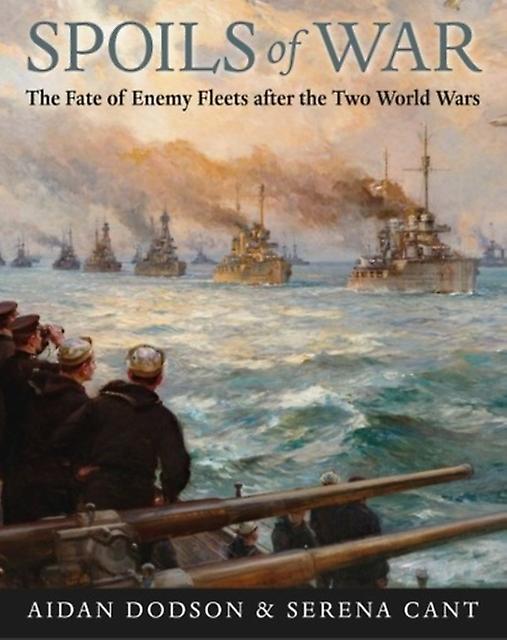
Spoils of war. The Fate of Enemy Fleets after the Two World Wars. By Aidan Dodson & Serena Cant Seaforth Publishing, Barnsley, 2020. ISBN 978-1-5267-4198-1
Reviewed by David Hobbs
Aidan Dodson is Honorary Professor of Egyptology at Bristol University but has a long-standing interest in naval history and has written several well-regarded books. Before moving to an academic career, he worked in the Ministry of Defence and was involved in UK warship procurement for a number of years. Serena Cant is a marine information officer working for Historic England who specialises in shipwreck documentation and research and has contributed to publications on the subject. Their joint effort has produced a fascinating and authoritative book on a subject that has not previously received sufficient attention. It can fairly be described as the definitive work on this complex subject.
The book is divided logically into two sections covering the first and second world wars. I particularly liked the way the authors describe the endgame in each case, the last months of conflict, since this allows the reader to understand the state each enemy navy had been reduced to when the fighting ended including mutiny and battle damage. The fleets of the defeated nations are then covered in order; Germany, Austria-Hungary, Turkey and Bulgaria in the case of the First World War. The various armistice agreements are explained together with the complication in the case of Germany that specified surface ships were interned with small German caretaker crews, U-boats were surrendered outright and some surface ships left in Germany under national control. The factors that influenced the negotiations leading to individual peace treaties are described as is the famous scuttling of German ships in Scapa Flow on 21 June 1919.
Subsequent chapters describe the transfer of ships to the victorious navies and their uses for technological evaluation, as gunnery and torpedo targets and in some cases as operational warships. The text is supported by a wealth of maps and photographs, many of the latter from Aidan Dodson’s own collection. Many have never, previously, been published. Transfers are dealt with on a country by country basis culminating with ships that were converted for mercantile use or scrapped. There are maps showing where surrendered ships were scuttled, sunk as targets or foundered under tow and even where remains can be seen today. This section ends with lists of every enemy warship extant at the end of the war, grouped by country, showing their eventual fate. These fill fifty pages are a remarkable feat of research in their own right. I can think of no other single reference that would give such comprehensive details of the eventual fates of these ships.



